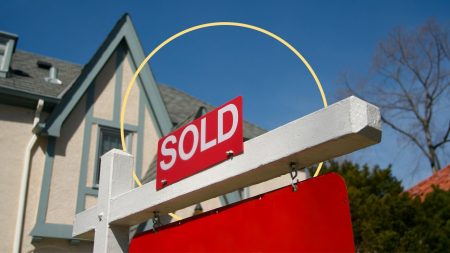The expenses don’t end when you buy a house. In fact, they’re just beginning. Homes come with a lot of hidden costs — and chief among them is maintenance.
You might not take maintenance into account when purchasing a home, especially if you’re moving from a rental where upkeep is largely handled by the landlord. Result: surprise or even alarm when a major appliance dies, the furnace leaks or or a window gets broken. A vast majority (78 percent) of homeowners dealt with an unexpected repair in 2023, according to a report from insurance company Hippo.
Along with large, unexpected repairs, there’s routine, day-to-day maintenance — and that, too, adds up quickly. In Q3 of 2024, the average annual cost to maintain a single family home rose to an all-time high of $10,433, according to home renovation platform Thumbtack’s “Home Care Price Index.”
Throw in other ongoing homeownership expenses, like property taxes, insurance and HOA fees and the typical single-family home costs over $18,000 annually to maintain, according to Bankrate’s Hidden Costs of Homeownership Study.
Of course, these maintenance costs can vary widely depending on the home and your location. They range from about $11,500 a year in Kentucky to just over $29,000 in Hawaii.
Most common home maintenance costs
Since the pandemic, maintenance and repair costs have gone through the roof (no pun intended). Supply-chain issues have resulted in a shortage of materials, which is only now starting to alleviate. On the demand side, an increase in extreme weather events has driven up the need for and frequency of repairs. That’s put a strain on labor, and the cost of contractors’ and professionals’ services has risen too.
On top of all that, elevated interest rates have made borrowing for large-scale renovations more costly. In 2023, homeowners spent 51 percent more on home projects than they did in 2019, according to home services company Angi’s 2023 “State of Home Spending” report.
Maintenance may add up, but it almost always is cheaper than repairs and renovations – not to mention its preemptive value. Interestingly, in the Hippo study, 45 percent of homeowners said they experienced damage to their home they could’ve prevented.
Below are some of the most common ongoing costs of homeownership: the most regular expenses you can count on running into and will want to prepare for.
1. Lawn care and landscaping
Lawn care is one of the most time-consuming parts of home maintenance. But it’s a key part of curb appeal. HomeGuide found that the average American spends about $1,200 to $2,400 per year on lawn care and landscaping. Most of that is tied up in mowing, watering, and general landscaping (mulching, hedge trimming and gardening). The beauty of lawn care and landscaping, however, is that you can cut the cost by doing most of the work yourself. If you hire a pro, the average cost per visit ranges from $130 (standard lawn care) to $450 (bigger jobs, like tree-trimming), according to home-project site Fixr.
2. HVAC cleaning and maintenance
Air quality matters in your home and giving your HVAC system a regular cleaning helps. According to Home Advisor, the average cost of cleaning your air ducts ranges from $269 to $506. While you should only need to do full cleaning once every five years or so, some smaller efforts and replacing filters make breathing easier at home.
3. Clearing rain gutters
It’s important to clean your gutters to prevent damage to both the interior and the exterior of your home. If gutters get blocked by leaves and debris, you may end up with water overflow that risks damaging your roof and walls of your home if water builds up in places it isn’t supposed to be. Also, water collecting around the base of your house can ultimately damage your foundation.
HomeAdvisor says the average cost of gutter cleaning ranges from $119 to $234, and it’s recommended you clean them one to three times per year depending on the weather and the amount of debris that can collect in them. Homes that aren’t surrounded by trees, for instance, may not require as much gutter cleaning. You can often clean gutters yourself to keep the expenses low, but know that it can mean a lot of time spent on a ladder.
4. Pest prevention
Bugs and rodents love to make your home their own, especially in unfavorable weather, and they are quite good at finding a way in. Looking for signs of their presence can help you stop the invasion before it gets serious. Paying for an exterminator can be expensive, especially if you have an infestation. On average, pest control services range from $108 to $261 according to HomeAdvisor. You can do some pest control on your own by purchasing traps and sprays that kill invaders before the problem gets out of control. Remember that old saying: an ounce of prevention is worth a pound of cure.
5. Housekeeping and house cleaning
A clean home is a safer home. Regularly cleaning your home, from scrubbing down countertops and heavy traffic areas to vacuuming and sweeping is often a task that consumes more time than money. Still, cleaning supplies aren’t cheap, with costs running close to $170 per consumer in 2022, the latest year figures were available; figuring inflation, that’d be closer to $182 in 2024.
However, not everyone has the time or ability to get to deeper housekeeping chores. For those who need some assistance, the average hourly rate for professional house cleaning is around $224 a month, according to Thumbtack.
6. Deck staining and cleaning
If your home has a deck, it’s going to need upkeep, especially if it’s made of wood. Cedar decks, for example, typically need to be cleaned and stained annually. Painted decks made with pine may only need to be repainted every three years or so. Composite decks, on the other hand, only need to be pressure washed. Depending on the size of the deck and your skill level, this may be something you could do yourself, drastically reducing the cost.
Consumers spend an average of $980 every two to three years on deck staining and sealing according to Thumbtack.
7. Pool care
A swimming pool is a luxurious amenity, but it’s not without its downsides. Pool upkeep can be expensive. The range of cost varies a lot depending on how long you keep your pool open. HomeGuide estimates that maintenance costs $80 to $150 a month. Additional pool cleanings and opening/closing your pool costs more, however. When factoring in all cleanings, repairs, electricity and water, the average owner will spend $3,000 to $6,000 a year on their pool.
8. Roof repair and maintenance
One of the most important and costly pieces of your home is your roof. While you may not have to maintain it much, when you do have to fork over money for a fix, it can be a big chunk of change. Thumbtack estimates that homeowners spend $1,313 per year on roof upkeep and repair. However, these costs can go much higher if there’s extensive damage, rotting or leaking. In fact, as soon as water damage is involved, repairs can range from $1,000 to over $6,000, according to HomeGuide.
Which home care costs have increased the most?
Inflation has increased the cost of home maintenance, but all home-care projects have risen equally. These seven categories have seen the biggest boost in repair and maintenance in the past year:
| Project | Year-over-year increase |
|---|---|
| Central air conditioning system | 14.62% |
| Heating system | 14.43% |
| Pest control services | 13.06% |
| Sprinkler/Irrigation system | 11.48% |
| Tree trimming/removal | 8.85% |
| Roof | 8.78% |
| Appliances | 8.77% |
| Source: Thumbtack Home Care Price Index, Q3 2024 |
How much should you spend on home maintenance costs?
How much you should budget for home repairs depends on your income and location, as well as the size and value of your home. Bankrate’s Unexpected Costs of Homeownership Survey found that only 24 percent of homeowners have set aside money for home repairs and maintenance, and that 19 percent have taken on debt to cover the costs of unexpected home repairs.
In case of emergency
It’s important to have a plan in case something unexpected happens to hurt your home. Setting aside funds in a savings account is a smart place to start. But what if you don’t have the savings, or don’t want to spend it? You can also finance emergency repairs by borrowing against your home equity (your property’s value, minus any mortgage). In fact, 55 percent of current homeowners cite improvements or repairs as a good reason to tap equity, according to Bankrate’s Home Equity Insights Survey.
But home maintenance is something you can plan for. One way to figure the costs: budget 1 to 4 percent of your home’s value on annual upkeep — 1 percent for the routine chores, then an additional 3 percent for unexpected replacements or fixes. This formula breaks down as:
| HOME VALUE | MAINTENANCE/REPAIR EXPENDITURE |
|---|---|
| $250,000 | $2,500 – $10,000 |
| $300,000 | $3,000 – $12,000 |
| $350,000 | $3,500 – $14,000 |
| $400,000 | $4,000 – $16,000 |
| $450,000 | $4,500 – $18,000 |
| $500,000 | $5,000 – $20,000 |
| $550,000 | $5,500 – $22,000 |
| $600,000 | $6,000 – $24,000 |
| $700,000 | $7,000 – $28,000 |
| Source: HomeGuide |
Keep in mind that older homes typically require more maintenance and may need more extensive repairs over time. Often you need to replace or update major home systems, such as converting from a wood stove to a gas stove or from an oil furnace to an electric HVAC system, or installing central air conditioning.
Bottom line on home maintenance costs
We get it: Home upkeep can be a bite in your budget you’d rather not have. In fact, Bankrate’s Homeowner Regrets Survey found that maintenance and other hidden costs being more expensive than anticipated was the most commonly cited item. Some 40 percent of homeowners with regrets named it, looking back on their home purchase.
But, once you buy a home, you take on the responsibility of maintaining it. This responsibility means keeping things in good condition and making necessary repairs promptly. A poorly maintained home will not only lose value (depleting the worth of your ownership stake), but can become unsafe.
“Homeowners have told us they’re planning to stay in their homes for the long run,” says Marco Zappocosta, CEO and founder of Thumbtack. “And as we continue to see the effects of an aging housing supply — where the average home in the U.S. is 43 years old — maintenance is an extremely crucial part of keeping things running smoothly and avoiding emergencies.”
In other words, your home is an investment: in your life, in your home’s life and your enjoyment of it.
Read the full article here










